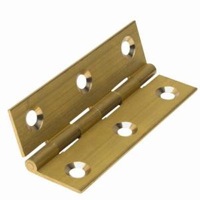Hinge
Origin
Middle English heng; akin to Middle Dutch henge hook, Old English hangian to hang
Definitions
- 1a : a jointed or flexible device on which a door, lid, or other swinging part turns
- b : a flexible ligamentous joint
- c : a small piece of thin gummed paper used in fastening a postage stamp in an album
- 2: a determining factor : turning point
Description
A hinge is a type of bearing that connects two solid objects, typically allowing only a limited angle of rotation between them. Two objects connected by an ideal hinge rotate relative to each other about a fixed axis of rotation. Hinges may be made of flexible material or of moving components. In biology, many joints function as hinges.
Since at least medieval times there have been hinges to draw bridges for defensive purposes for fortified buildings. Hinges are used in contemporary architecture where building settlement can be expected over the life of the building. For example, the Dakin Building, California was designed with its entrance ramp on a large hinge to allow settlement of the building built on piles over bay mud. This device has been effective.
Hinges appear in large structures such as elevated freeway and railroad viaducts. These are included to reduce or eliminate the transfer of bending stresses between structural components, typically in an effort to reduce sensitivity to earthquakes. The primary reason for using a hinge, rather than a simpler device such as a slide, is to prevent the separation of adjacent components. When no bending stresses are transmitted across the hinge it is called a zero moment hinge.[1]
